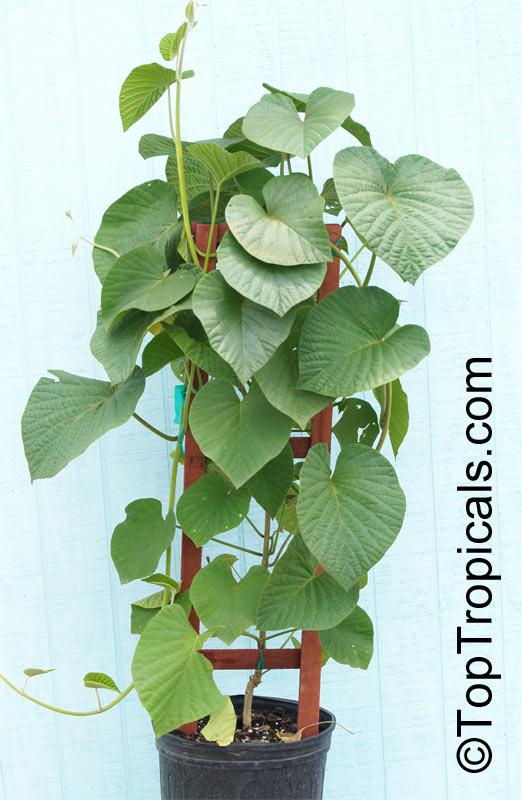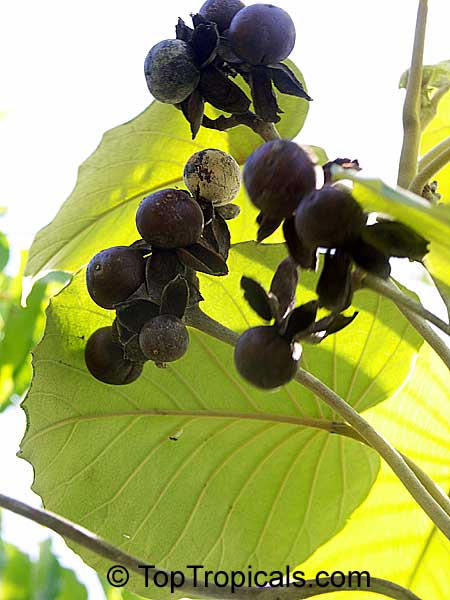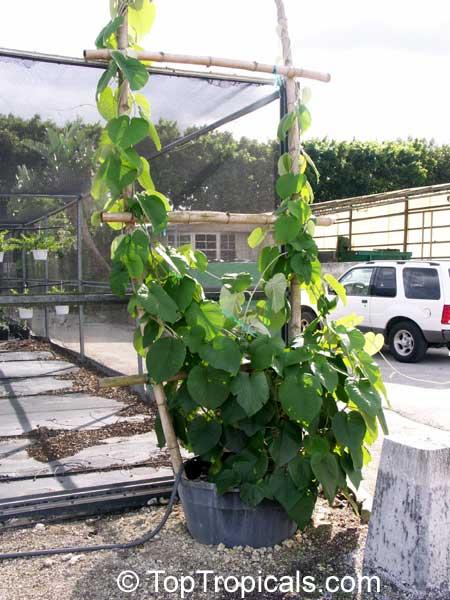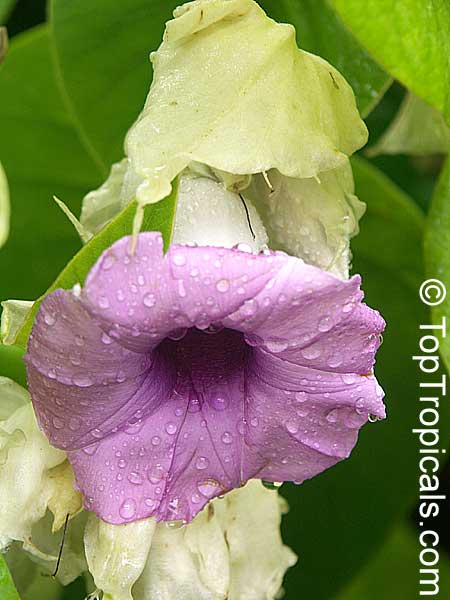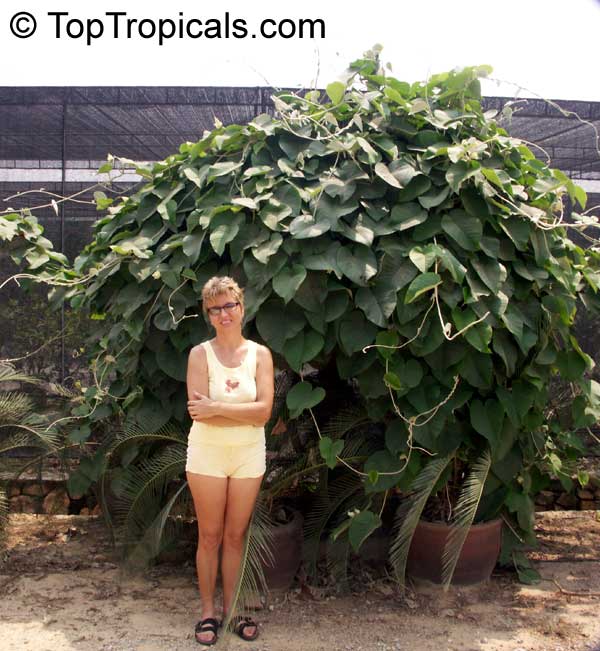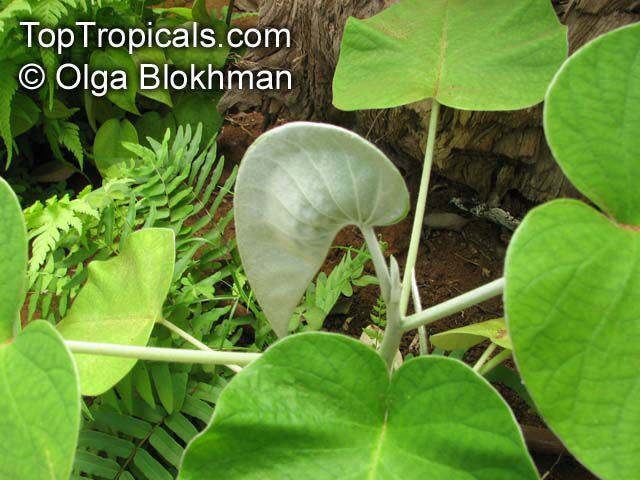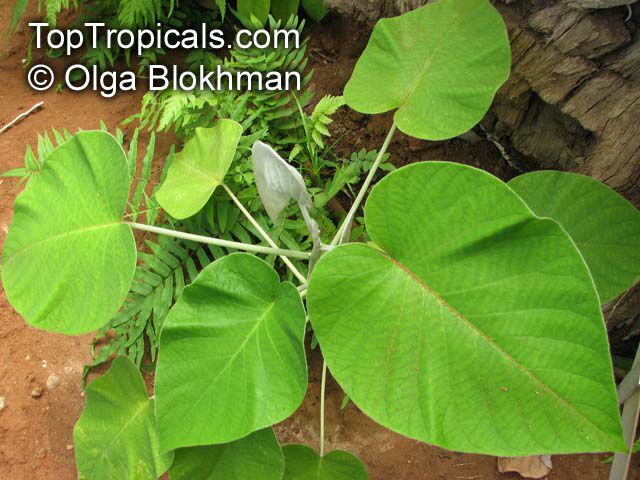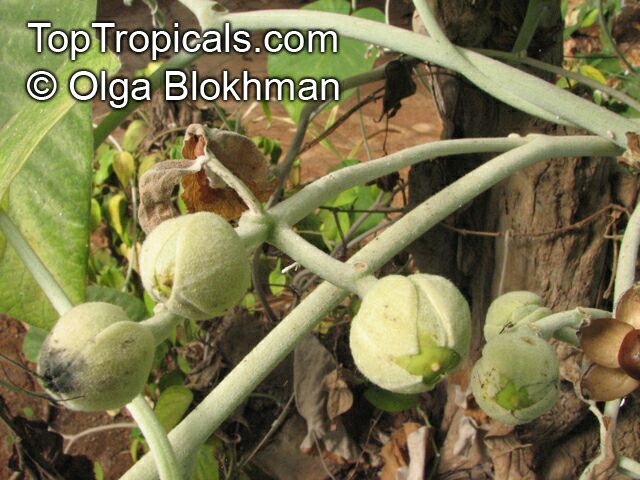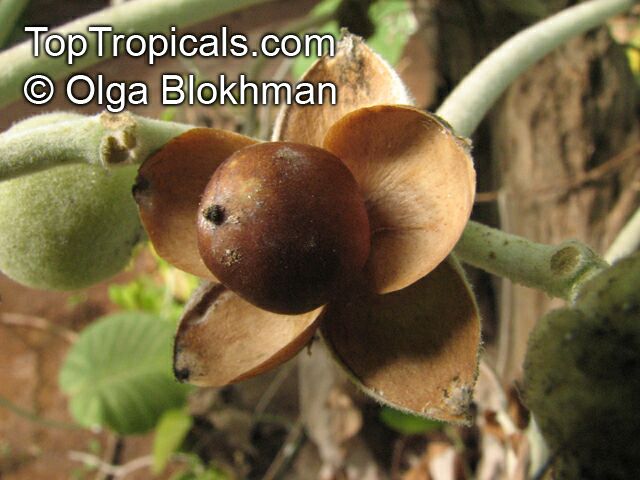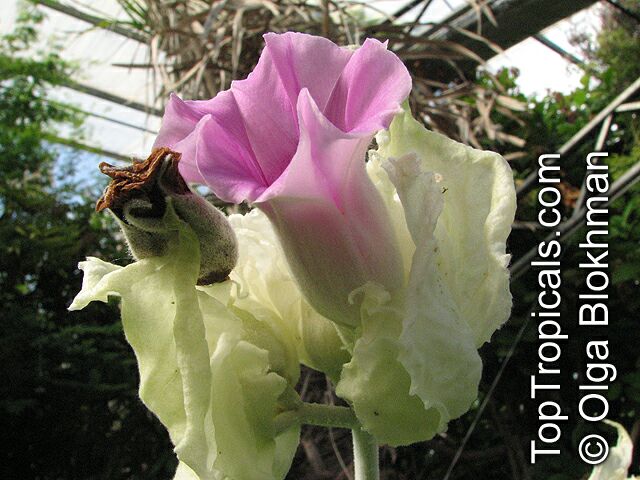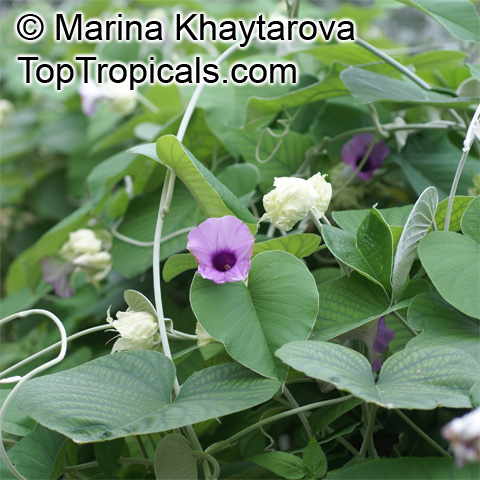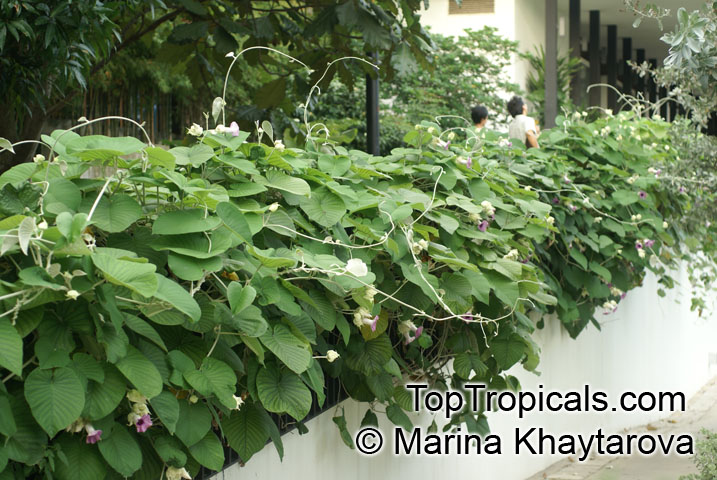Pictogram Guide · Mouse over pictogram for definition
Argyreia nervosa, Argyreia speciosa
Elephant creeper; Woolly Morning Glory, Hawaiian Baby WoodroseFamily: Convolvulaceae
Origin: India










A native of eastern India and Bangladesh, this vigorous twiner will grow 30 ft (9 m) or more into the treetops, but can be trained over a post or stump and kept trimmed to a moundlike form. A dense white down covers both young stems and leaf undersides. The leaves are ovate-cordate, to 1 foot across, white tomentose beneath with lateral veins conspicuous on the undersides. Tight clusters of trumpet-shaped bright pink flowers about 2 in (5 cm) across on pedicels to 6 inches long appear among the foliage in spring and summer. In a tropical climate cultivation is simple, the plants making very vigorous growth in a sunny position in moist soil. In cooler climates they can be grown in a sunny conservatory, but due to their rampant growth will need frequent cutting back. Propagate from seed or cuttings. Used medicinally in India. The roots and seeds of Elephant Creeper have been used as a support of the nervous system, a geriatric tonic and mild aphrodisiac. The whole plant is reported to have purifying properties. It is also taken to help maintain healthy joints.
Similar plants:
